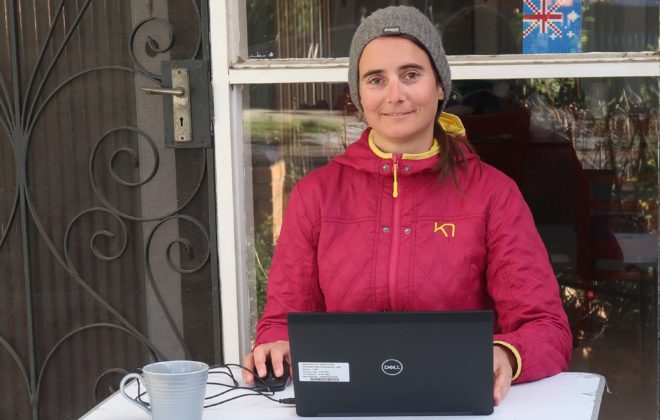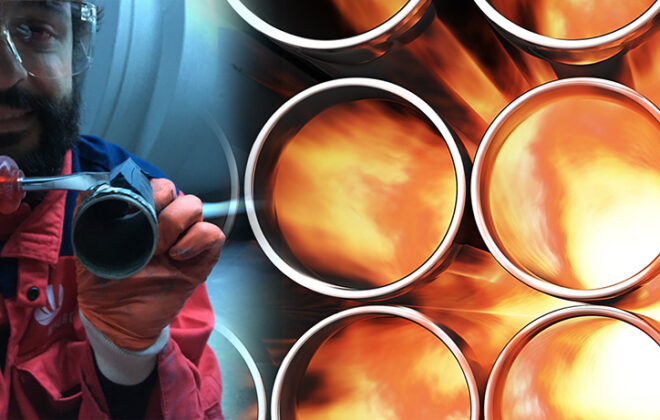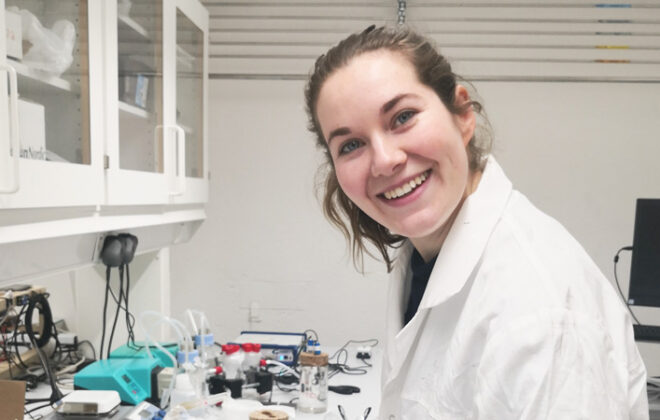Is weight loss toxic to tiny top athletes?
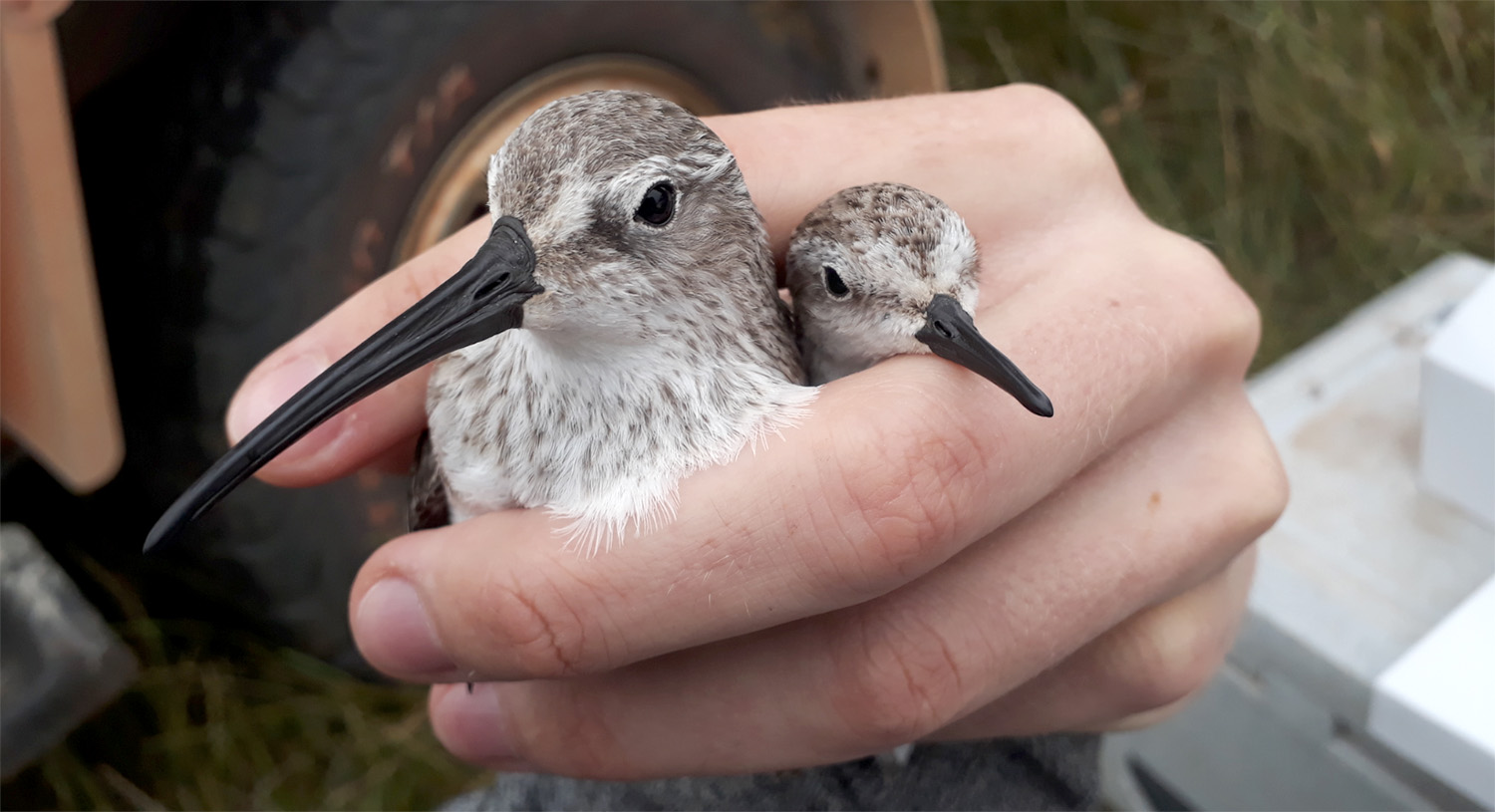
Imagine weighing twice as much as you do now and 50% of your body mass consisting of fat. In this condition, you must cycle for eleven days straight without stopping once to rest, drink, or eat. After this strenuous journey you have to make sure that you look your best, because as soon as you arrive, you need to mate. Time is ticking; after eight weeks you will need to cycle all the way back home!
Shorebirds – The champions of bird migration
This is the life of a shorebird – the champions of bird migration. Shorebirds are famous for their globe-spanning migrations, with some species covering distances of more than 10,000 km in a single flight1. Shorebird migration overshadows the endurance of those competing in the recently completed 21 day-long Tour de France, that covers around 3,500 kilometres. Tour de France competitors burn 5000–8000 kcal per day to maintain a metabolic rate that is five times higher than in a resting state2. Shorebirds maintain metabolic rates more than ten times higher than their resting rates for over nine days3.
Doubling their body weight
On top of flying long distances, shorebirds must also be ready to mate and lay eggs immediately upon reaching their breeding grounds in the north, sometimes as far as the Arctic. To achieve this, they feast on aquatic invertebrates, molluscs, insects, and small fish before departure. Many eat so much, that they double their body weight. Once they can’t put on any more weight, their feeding organs shrink, and their breast muscles and heart grow to maximise flight efficiency4.
For the shorebirds, fat is the main energy source during migration. Fat is great. It is twice as calorie-rich as carbohydrates and protein, making it the most energy-dense nutrient. Fat cells are like hoarders: they are constantly storing stuff, because “you never know when something might come in handy one day”. This ‘stuff’ includes fats (obviously), vitamins, hormones, but also toxic chemicals taken up from the environment. During migration, fat cells let go of fat to fuel flight. Unfortunately, those toxic chemicals are also released from the fat stores5,6. Is this harming migratory shorebirds? This is what we are trying to find out as part of the COAST IMPACT project.
The dose makes the poison
In toxicology, the phrase “the dose makes the poison” is often used. This concept dates back centuries, to the time when arsenic and plant poisons were the main toxic chemicals to worry about. Finding out how toxic one specific chemical is, is challenging enough. Toxic effects depend not only on the dose, but also on how it enters the body and how often you are exposed (e.g. one large dose versus multiple low doses). Long-term studies are often needed to find out about effects that occur after some time, such as lung cancer or giving birth to deformed babies.
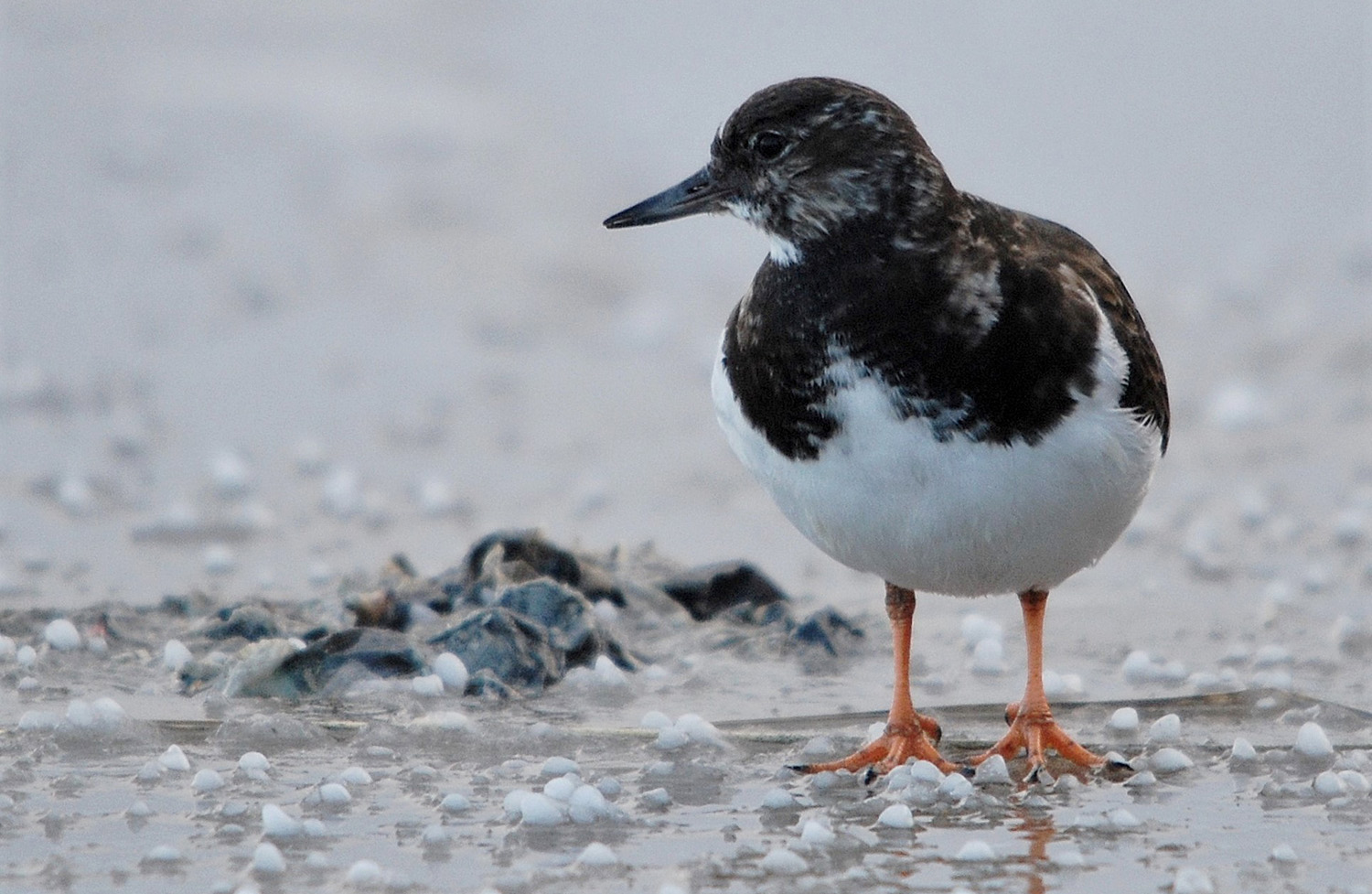
Since humans mastered the art of creating new chemicals in laboratories, the number of man-made chemicals in the environment has skyrocketed. As a result, all organisms are exposed to a cocktail of many different chemicals each day. The composition of the cocktail is constantly changing and when chemicals occur together, even low doses of each chemical could be harmful.
It is possible to detect chemicals at concentrations equivalent to a drop of water in an Olympic swimming pool.
It is challenging to figure out how all the possible combinations of chemicals affect the health of organisms. Luckily, state-of-the-art lab techniques and improved computer models are bringing us closer to understanding the effects of the chemical cocktails. Nowadays, it is possible to detect chemicals at concentrations equivalent to a drop of water in an Olympic swimming pool. Furthermore, we are able to measure subtle changes in molecules in our bodies that might be early indicators of damage.
One group of such molecules are microRNAs. MicroRNAs are small RNA molecules that are found in all our cells. They prevent the translation of specific messenger RNA copies into proteins. They are the body’s audit mechanism, in the sense that they form an extra checkpoint during protein production. Not surprisingly, if this audit mechanism fails, important cell processes might be disrupted. This has already been found to be the case for many diseases in humans, including cancer7. These pygmy RNAs might also be able to shed light onto how toxic chemicals affect cells and harm the immune system8,9.
COAST IMPACT combines environmental chemistry and biology expertise to find out more about chemical cocktail effects in shorebirds.
Why shorebirds?
Their athletic lifestyle that includes a lot of yo-yo dieting (losing and regaining weight over and over again) makes them interesting creatures to study the effects of toxic chemicals. Furthermore, many shorebird populations are rapidly shrinking10, a classic example of a ‘canary in the coal mine’ (miners used to take canary birds with them into coal mines to detect the presence of poisonous gases. If the birds showed signs of distress, it was time for the miners to retreat). Shorebirds play key roles in food webs, and it has been suggested that they are important for mudflat ecosystem services such as erosion protection, nutrient cycling and carbon sequestration11,12. Finally, shorebirds can carry avian influenza viruses, a serious disease for the poultry industry with the potential to mutate and infect humans13. Could toxic chemicals weaken shorebird immune systems and increase the spread of such viruses during long-distance migration? We hope to find an answer to this and other questions.
Would you like to stay updated about COAST IMPACT project findings?
Follow COAST IMPACT on Facebook and read more about COAST IMPACT on our official web page.
References
- Gill Jr, R. E., Piersma, T., Hufford, G., Servranckx, R. & Riegen, A. 2005. Crossing the ultimate ecological barrier: evidence for an 11 000-km-long nonstop flight from Alaska to New Zealand and eastern Australia by bar-tailed godwits. The Condor, 107, 1-20.
- Saris, W., van Erp-Baart, M.A., Brouns, F., Westerterp, K.R. and Ten Hoor, F., 1989. Study on food intake and energy expenditure during extreme. Int J Sports Med, 10, pp.S26-S31.
- Weber, J. M. (2009). The physiology of long-distance migration: extending the limits of endurance metabolism. Journal of Experimental Biology, 212(5), 593-597.
- Piersma, T., 1998. Phenotypic flexibility during migration: optimization of organ size contingent on the risks and rewards of fueling and flight? Journal of Avian Biology, pp.511-520.
- Malcolm, H.M., Osborn, D., Wright, J., Wienburg, C.L. and Sparks, T.H., 2003. Polychlorinated biphenyl (PCB) congener concentrations in seabirds found dead in mortality incidents around the British coast. Archives of environmental contamination and toxicology, 45(1), pp.0136-0147.
- Wienburg, C.L. and Shore, R.F., 2004. Factors influencing liver PCB concentrations in sparrowhawks (Accipiter nisus), kestrels (Falco tinnunculus) and herons (Ardea cinerea) in Britain. Environmental Pollution, 132(1), pp.41-50.
- Iorio, M.V. and Croce, C.M., 2012. MicroRNA dysregulation in cancer: diagnostics, monitoring and therapeutics. A comprehensive review. EMBO molecular medicine, 4(3), pp.143-159.
- Waugh, C. A., Arukwe, A. & Jaspers, V. L. 2018. Deregulation of microRNA‐155 and its transcription factor NF‐kB by polychlorinated biphenyls during viral infections. Apmis, 126, 234-240.
- Badry, A., Jaspers, V. L. & Waugh, C. A. 2020. Environmental pollutants modulate RNA and DNA virus-activated miRNA-155 expression and innate immune system responses: Insights into new immunomodulative mechanisms. Journal of Immunotoxicology, 17, 86-93.
- Studds, C. E., Kendall, B. E., Murray, N. J., Wilson, H. B., Rogers, D. I., Clemens, R. S., Gosbell, K., Hassell, C. J., Jessop, R. & Melville, D. S. 2017. Rapid population decline in migratory shorebirds relying on Yellow Sea tidal mudflats as stopover sites. Nature communications, 8, 1-7.
- Booty, J. M., Underwood, G. J., Parris, A., Davies, R. G. & Tolhurst, T. J. 2020. Shorebirds Affect Ecosystem Functioning on an Intertidal Mudflat. Frontiers in Marine Science, 7, 685.
- Mathot, K. J., Piersma, T. & Elner, R. W. 2018. Shorebirds as Integrators and Indicators of Mudflat Ecology. In: Beninger, P. G. (ed.) Mudflat Ecology. Cham: Springer International Publishing.
- Wille, M., Lisovski, S., Risely, A., Ferenczi, M., Roshier, D., Wong, F. Y., Breed, A. C., Klaassen, M. & Hurt, A. C. 2019. Serologic evidence of exposure to highly pathogenic avian influenza H5 viruses in migratory shorebirds, Australia. Emerging infectious diseases, 25, 1903.

Anne-Fleur Brand
Anne-Fleur Brand is a PhD candidate at the Department of Biology at NTNU. She is a member of the Environmental Toxicology research group.
Tags In
Search
Søk
Categories
- Arctic Research
- Arkitektur
- Bærekraft
- Bioingeniørfag
- Biologi
- Biology
- Biomedical Laboratory Science
- Biotechnology
- Bioteknologi
- Chemical Engineering
- Chemistry
- Climate
- Computer Science
- Datateknologi
- Digital
- Elektronikk
- Energi
- Energi
- Energy
- Engineering
- Engineering
- Environment
- Food Science
- Forskning
- Fysikk
- Fysikk
- Havbruk
- Informasjonsteknologi
- Informasjonsteknologi
- Ingeniørvitenskap
- Kjemi
- Kjemisk prosessteknologi
- Kjemisk prosessteknologi
- Kreftbehandling
- Kybernetikk
- Marine Technology
- Materialer
- Materials Science
- Materialteknologi
- Matvitenskap
- Meninger
- Miljø
- Min ph.d.
- My PhD
- My PhD
- My postdoc
- Nanotechnology
- Nanoteknologi
- Ocean
- Oil and gas
- Physics
- Research
- Simulering og visualisering
- Spør en forsker
- Studentliv
- Sustainability
- Ukategorisert
- Universitetsliv
- University Life
Kategorier
- Arctic Research
- Arkitektur
- Bærekraft
- Bioingeniørfag
- Biologi
- Biology
- Biomedical Laboratory Science
- Biotechnology
- Bioteknologi
- Chemical Engineering
- Chemistry
- Climate
- Computer Science
- Datateknologi
- Digital
- Elektronikk
- Energi
- Energi
- Energy
- Engineering
- Engineering
- Environment
- Food Science
- Forskning
- Fysikk
- Fysikk
- Havbruk
- Informasjonsteknologi
- Informasjonsteknologi
- Ingeniørvitenskap
- Kjemi
- Kjemisk prosessteknologi
- Kjemisk prosessteknologi
- Kreftbehandling
- Kybernetikk
- Marine Technology
- Materialer
- Materials Science
- Materialteknologi
- Matvitenskap
- Meninger
- Miljø
- Min ph.d.
- My PhD
- My PhD
- My postdoc
- Nanotechnology
- Nanoteknologi
- Ocean
- Oil and gas
- Physics
- Research
- Simulering og visualisering
- Spør en forsker
- Studentliv
- Sustainability
- Ukategorisert
- Universitetsliv
- University Life

